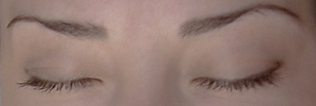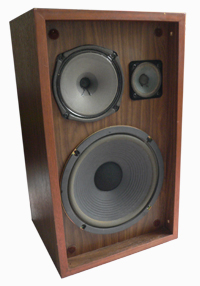So you’re planning on buying some new toys, or shifting your set up around, but how will you know if you have actually made things better?
First things first, you need some test material. Several hi-fi manufacturers make CDs of test tracks, but I suggest finding a small selection of material you know really well and covers the range of music that you enjoy. My personal selection includes: The Cinematic Orchestra, Björk, Led Zeppelin and Steve Reich.
Burn these tracks on a CD and take it with you when you go shopping (any decent hi-fi or pro audio shop should have a listening room to try out equipment).

Wherever possible shut your eyes and ask a friend or shop assistant to switch (or rearrange) equipment so you can be sure you are listening with your ears and not your eyes or bank balance.
Guidelines
You don’t need to be an expert to listen for the changes you have made, just trust your ears and listen out for the following:
New detail
An upgrade may uncover the unheard in the familiar. Hearing the inhalation of breath in an intimate vocal can make the hairs on the back of your neck stand up.
Separation
You should be able to hear the parts that make up the music as distinct instruments. If you can perceive the individual voices in a close harmony or double-tracked vocal you are in the right ball park.

Hearing the music not the speaker
Your ears are very sensitive to the reflections of different sized rooms. On smaller and cheaper speakers this can result in the feeling that the music is coming from a small wooden box (which indeed it is!) Good, well positioned speakers should hide this making you feel like you were in the room where the music was recorded.
Stereo Imaging
When listening to an orchestra could you point to the string section? Do you feel like the music surrounds you, or that it’s coming from two points? If this is particularly poor, make sure you don’t have a phase problem caused by wiring one of your speakers backwards!
Balanced Frequencies
This is where knowing your test tracks is invaluable. The music should sound balanced with no particular frequency dominating (frequency training can help here).
Tight Bass
Good bass doesn’t mean loads of bass. Make sure that bass does not rumble, or ring on and there is no “chuffing” sound from vents at high volume. Similarly if certain bass notes jump out at you it may be due to a badly designed speaker.
Extended Listening
If you find your ears getting tired after extended listening sessions, or the sound quickly becomes grating at higher volumes it may indicate a problem. Some shops will loan you equipment to try at home for this reason.
Easy(er) Ear Training
Try some ear training exercises. Good sound quality should improve your enjoyment and performance.

The Golden Rule
Finally and most importantly if you suddenly find that two hours have passed and you are still digging out CDs you just have to listen to, or you have either a big stupid grin on your face, or a tear in your eye – it’s safe to say you have made an improvement!
Remember to keep these kinds of things in mind whenever you’re choosing or arranging your equipment and you won’t go far wrong.
Next time around we’ll be talking about the ins and outs of headphones: the various types, how to choose a pair, what matters and what doesn’t, and how they compare with a room-filling hi-fi setup. Don’t forget the guidelines above though – they’re still just as relevant!








